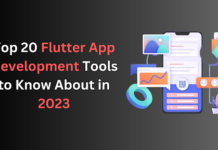Data governance is an essential part of any organization’s IT landscape. It allows organizations to track and manage their data to be used in the most efficient and effective ways possible. One of the best solutions for data governance is using applications from Microsoft, one of the leading enterprise software providers. This blog post will look at seven Microsoft Intelligent Data Platform applications that can help improve data governance.
Microsoft intelligence tools can help organizations gain insights into their data that they would not be able to access without a powerful analytics tool. These tools allow users to quickly identify trends and patterns in their data and drill down into specific areas for further investigation. With the right intelligence tools, it can be easier to discover any issues in the data and take action to resolve them.
PowerApps
PowerApps is a Microsoft application that can help improve data governance. This application allows organizations to quickly create custom applications that they can use to manage their data better. It provides an intuitive user interface and includes features such as workflow automation and real-time analytics, allowing users to quickly identify any issues with the data and take action accordingly.
SQL Server Analysis Services (SSAS)
SQL Server Analysis Services (SSAS) is a powerful analytics engine from Microsoft that helps organizations gain insights into their data. SSAS can be used to create cubes, virtual collections of related data points that make it easier to analyze and understand the information within the organization’s databases. Additionally, SSAS allows users to set up alerts to receive notifications whenever there is a change in the data.
Microsoft Power BI
Power BI is a business intelligence tool developed by Microsoft that provides users with real-time insights into their data. This tool helps users make better decisions by providing interactive visualizations, dashboards, and reports based on their data. Power BI also includes features such as natural language query and machine learning capabilities that allow users to quickly identify patterns in their data without manually searching through large datasets.
Microsoft SharePoint
SharePoint is a collaborative platform developed by Microsoft that allows users to share documents, information, and tasks with other team or organization members. SharePoint also integrates with other Microsoft products such as Word, Excel, Outlook, and OneDrive, making it easy for users to access all the information they need in one place. Additionally, SharePoint includes features such as version control, making it easier for users to track document changes over time.
Microsoft Dynamics 365
Microsoft Dynamics 365 is an enterprise resource planning (ERP) solution developed by Microsoft that helps organizations gain greater visibility into their operations by providing real-time insights into their business processes from one centralized platform. This solution enables organizations to streamline operations by automating manual tasks such as order processing or invoicing. It also provides powerful analytics capabilities to measure key performance metrics accurately over time for better decision-making.
Microsoft Excel
Microsoft Excel is a powerful spreadsheet application that helps organize large amounts of structured or unstructured data into understandable formats. It allows users to create complex calculations across multiple worksheets easily and supports various charts to visualize data sets more effectively. Excel also includes built-in functionality for tracking changes in a workbook so you can easily keep track of who made what changes when needed for auditing purposes.
Azure Active Directory (AAD)
Azure Active Directory (AAD) is a cloud-based identity management solution developed by Microsoft that helps organizations securely manage user identities across multiple devices and platforms. AAD allows organizations to easily add new users while simultaneously removing old ones without having to manage multiple accounts or passwords manually — making it much easier for IT administrators to maintain control over who has access to certain parts of the system at any given time while ensuring compliance with industry regulations like GDPR or HIPAA.
Conclusion:
Data governance is essential for any organization looking to get the most out of its data resources while maintaining compliance with industry regulations like GDPR or HIPAA. By leveraging Microsoft applications such as Power Apps, SQL, PowerBI, Sharepoint, Dynamics365, Excel, and Azure Active Directory, companies can improve how they manage their data resources, allowing them to create more value from them while maintaining security measures intact at all times, and businesses can ensure that they have complete visibility into who has access to certain parts of their system while improving user productivity at the same time.











